Art World
The Job Market for Young Academics Was Already Bleak—Then the Pandemic Hit. Here’s How Art-History Grad Students Are Coping With the Fallout
"All of this is profoundly anxiety-producing," says one PhD candidate.
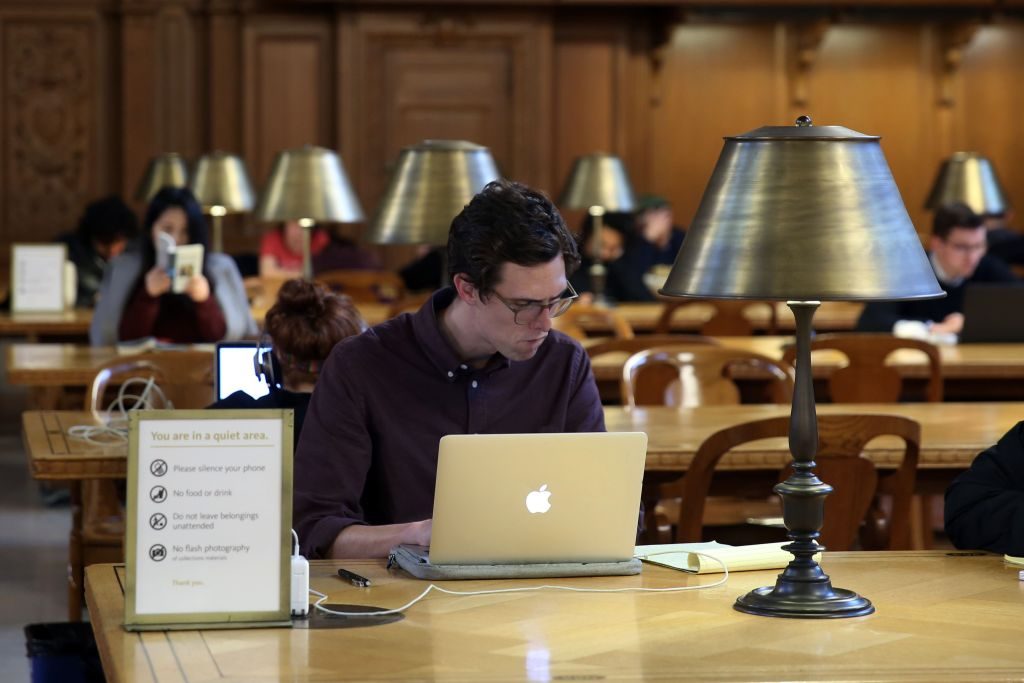
"All of this is profoundly anxiety-producing," says one PhD candidate.

It was a tweet from New York governor Andrew Cuomo this past March that alerted Anna Ficek, a PhD candidate in art history at the City University of New York’s Graduate Center, to the fact that her classes would be moved entirely online for the rest of the semester—and possibly longer.
The first shockwaves felt by many students in her department were the closures of libraries and archives, eliminating their physical workspaces and access to reading materials. Then came news that internships and job offers had been rescinded, and what were already slim career prospects narrowed into microscopic ones.
Even under normal circumstances, the career path of an art historian is notoriously competitive and arduous, involving years of research and training only to face off against countless other highly educated job seekers for increasingly low-wage, low-security teaching jobs.
Now, the pandemic has exacerbated the situation for PhD students and recent graduates alike. Those who are still in school may face indefinite delays in completing their research; those graduating in 2020 are looking at “a drastically reduced job market,” according to John Clarke, an art history graduate adviser at the University of Texas at Austin.
Ficek isn’t sure that she’ll be able to complete her studies at all. She is from Australia and her student visa expires in January 2022.
“I don’t think I will finish by then and I’m worried about how I will apply for a new visa, especially once I have run out of institutional funding,” she says.
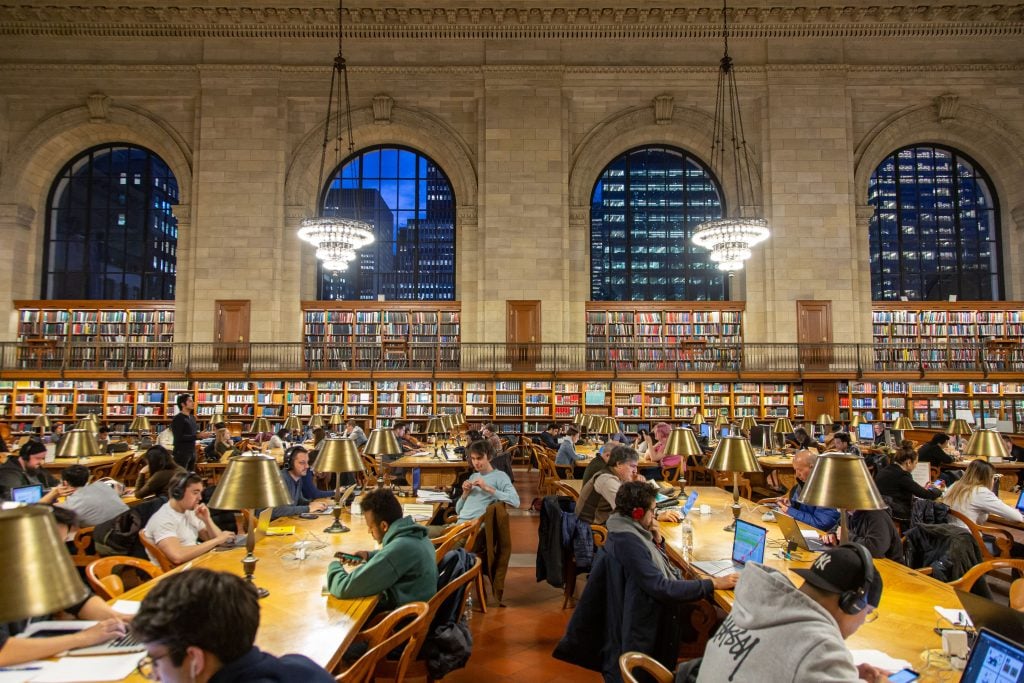
Students before the era of social distancing at the New York Public Library. Photo by Nicolas Economou/NurPhoto via Getty Images.
The closure of libraries has forced many students to choose between abandoning their research altogether or extending the length of their studies while they wait out the pandemic. Some have even tried amassing their own historic book collections to keep working.
“I’ve tried to grow my personal library as much as I can, but with some key volumes priced at over $100, and some historical sources going for over $1,000, it is impossible on a graduate student salary,” Ficek says.
Beyond access to research materials, the library also provided “air conditioning and stable internet, none of which I have at home,” says Zsofia Valyi-Nagy, an art history student at the University of Chicago. “The university administration’s insistence that we should all be able to continue our work as per usual is extremely unrealistic.”
One doctoral student at New York University’s Institute of Fine Arts (IFA), who wished to remain anonymous, said that the program is known for “object-based art history”—which poses a particular problem during the pandemic.
The institute “has no replacement for studying the object,” the student says. “Those finishing up their dissertations, looking to defend in the fall, are unable to consult sources, verify citations, etc., with the closure of library resources. All of this is profoundly anxiety-producing, and hanging over all of us is the specter of the complete collapse of the job market in all sectors of academia and the arts.”
As a result, more than 55 IFA doctoral students addressed a letter in late April to the school’s faculty requesting that the administration increase financial support by granting emergency funds and waiving fees; extend library privileges to post-graduates to support them as they enter the job market; and lengthen students’ time-to-degree (the number of years candidates take to complete their PhDs).
A representative for the IFA declined to comment on the students’ demands, but told Artnet News in an email: “The impact that COVID-19 has had on the academic world is of great significance, as it is in every aspect of our lives. We are still working through what it will look like in the fall.”
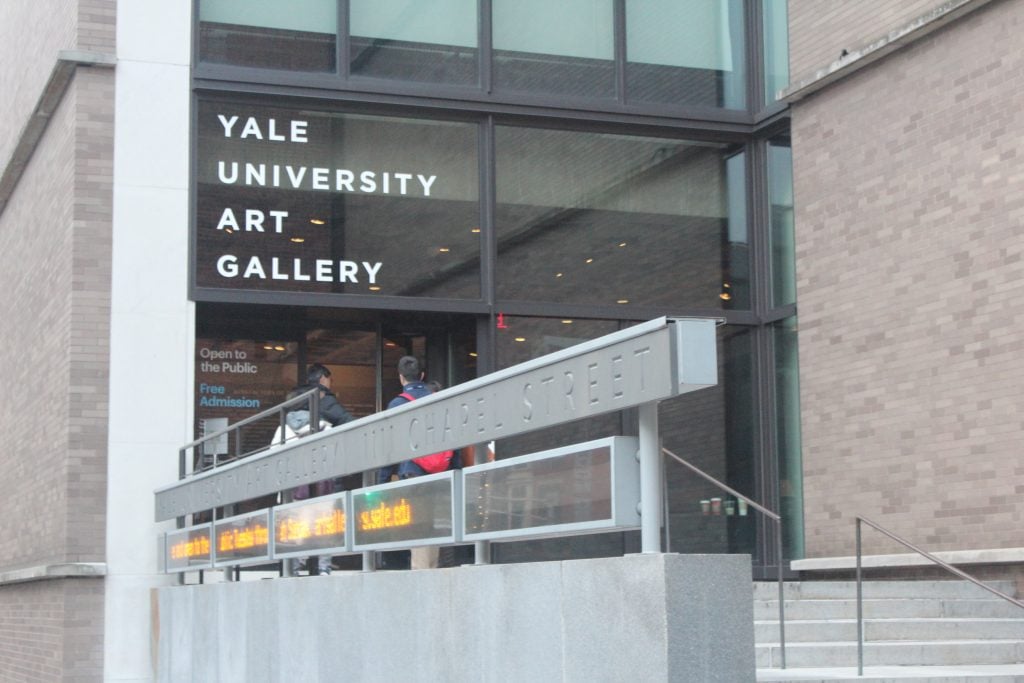
The facade of Yale’s Art Gallery, courtesy of Flickr.
International travel is a key component of many art history students’ research, and many programs have rigorous foreign-language requirements.
“I was supposed to hold a nine-month Fulbright fellowship to conduct research abroad for my dissertation,” says Valyi-Nagy, who is writing about the 96-year-old artist Vera Molnar, who lives in Paris.
“Despite her groundbreaking work in computer art, Molnar doesn’t use email or video chat, so the primary purpose of my trip was to spend time with her in her studio, conducting interviews and working through her archive together. At the risk of sounding macabre, I can say that time is not exactly on our side.”
Emily Markert, a graduate student in the curatorial practice program at the California College of the Arts in San Francisco, says that she had a research trip to Los Angeles canceled in April, “and the grant money will not be available to me next semester. I had to accept that there would be holes in my final term paper research.”
And Soffia Gunnarsdottir, a doctoral candidate who is studying Greek art at Yale University, tells Artnet News that her plans to conduct on-site research at archaeological sites and museums across the Mediterranean are on hold “indefinitely.”
“I need to rethink how I can complete my project on time with limited access to my objects of study,” she says. “At this point, I would say my progress will be delayed by a year, if not more.”
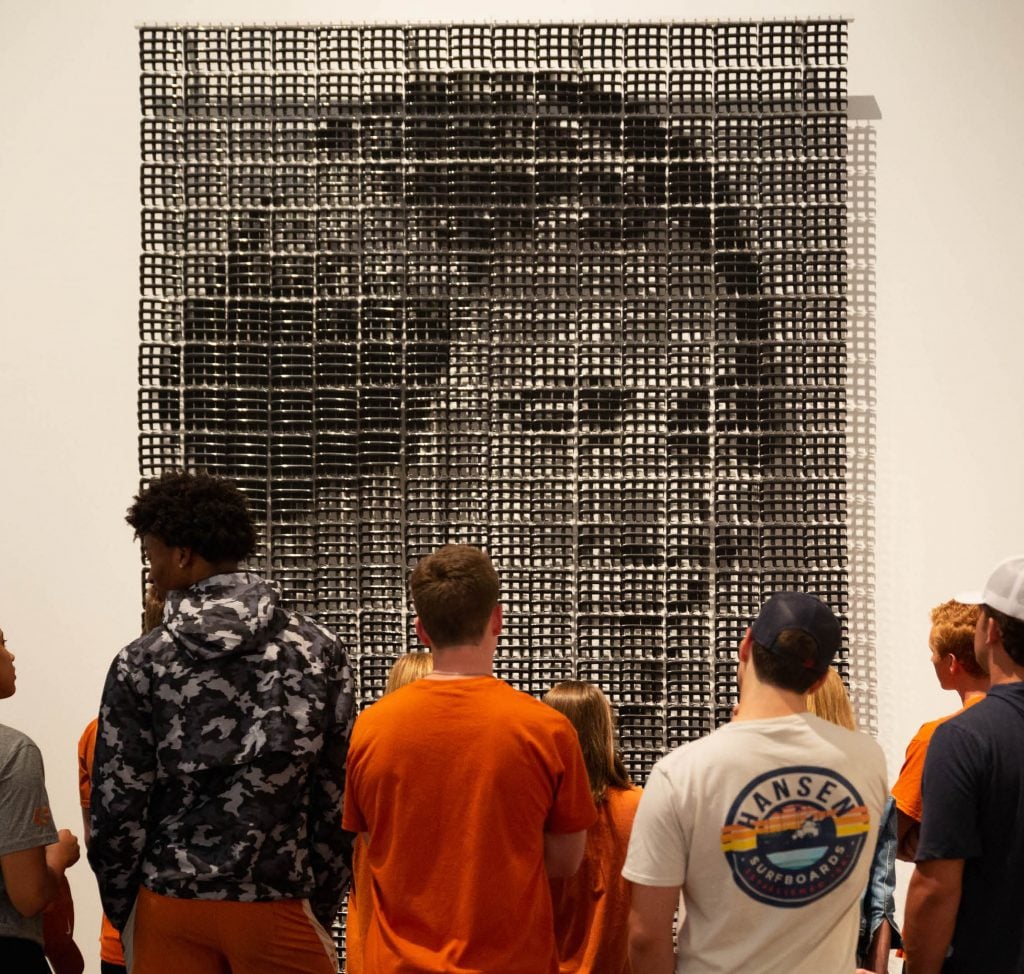
University of Texas, Austin students discussing Sonya Clark’s Madam C.J. Walker (2008). Photo courtesy of Blanton Museum of Art.
Historically, most students earning PhDs in art history have planned to become university professors. But in recent years, many top museum curator and director jobs began requiring candidates to have advanced art history degrees, too.
Today, doctoral programs often emphasize one career path or the other. “There are some that poo poo the curatorial path because it’s seen as ‘subpar,’ but we’re eager to have students go into both careers and we encourage them to keep both doors open,” says Christine Mehring, chair of the University of Chicago’s art history department and an adjunct curator at the Smart Museum of Art.
Both career paths are highly competitive, though academic jobs, in particular, have long been declining in terms of wages, job security, and benefits.
“The number of tenure-track faculty jobs has decreased dramatically and have been replaced with adjuncts or lecturers who have one or two classes, but don’t have the job security or intellectual freedom that tenure offers,” says Claudia Brittenham, a professor of art history at the University of Chicago.
“A much more likely path now involves doing a postdoc for a couple years, and then maybe another one, then a visiting assistant professorship, or taking a job that doesn’t work and trying desperately to get out of it. So you have this extended period of uncertainty, moving every year,” Brittenham says. “It’s hard to plan a life under those circumstances. And every year that it continues, it makes things worse for the next year.”
The shutdown has forced universities and museums across the country to slash budgets, leading to job cuts and a backlog of eligible job seekers.
Earlier this month, CUNY laid off thousands of adjunct faculty and staff, spurring its labor union to sue the university for allegedly violating its obligations under the CARES Act, the pandemic stimulus package that awarded the university $251 million in relief money.
Representatives for the union, PSC/CUNY, did not respond to requests for comment.

The CUNY Graduate Center in New York. Courtesy Wiki Commons.
The University of Chicago, meanwhile, put a hiring freeze on new administrative staff positions and said it would be “slowing” academic hiring. There are currently three open positions in the art history department, and “we’re not expecting to search” for candidates, Mehring says.
“The job markets are drying up in both academia and museums,” says Mehring, who estimates that five to seven students in her department had job offers rescinded. “That is a very devastating situation to be in—when it can take six to eight years, you worked this entire time, you get a job offer, and then it gets taken away? I cannot even imagine what that feels like.”
Fortunately, two of the students have since had their offers reinstated: One who was doing a postdoc and lost a tenure-track position had it reinstated for the following year; another had a museum position withdrawn and then re-offered.
Markert says she spent much of February applying for summer internships at museums and arts organizations in New York.
“By mid-March, nearly every institution to which I had applied announced the cancellation or postponement of their internship programs,” she says. “Not only is an internship a requirement for my program, but this was to serve as a key building-block for career development, providing hands-on experience and the opportunity to make valuable professional connections. The loss of this experience—and the potential stipend that would have come with it—has been a great source of anxiety.”
To make matters worse, all of these job seekers are now part of employment backlog, which was a growing problem for the field even before the pandemic.
“They’re compounding effects,” says Brittenham. “Every year, there are more students than jobs. That creates a backlog for the next year, then there’s this ‘credential creep,’ where you have applications for a tenure-track professorship with someone who has a three-year postdoc and a bunch of articles, compared to someone who’s just finishing a PhD, so then the credentials just amplify and amplify.”
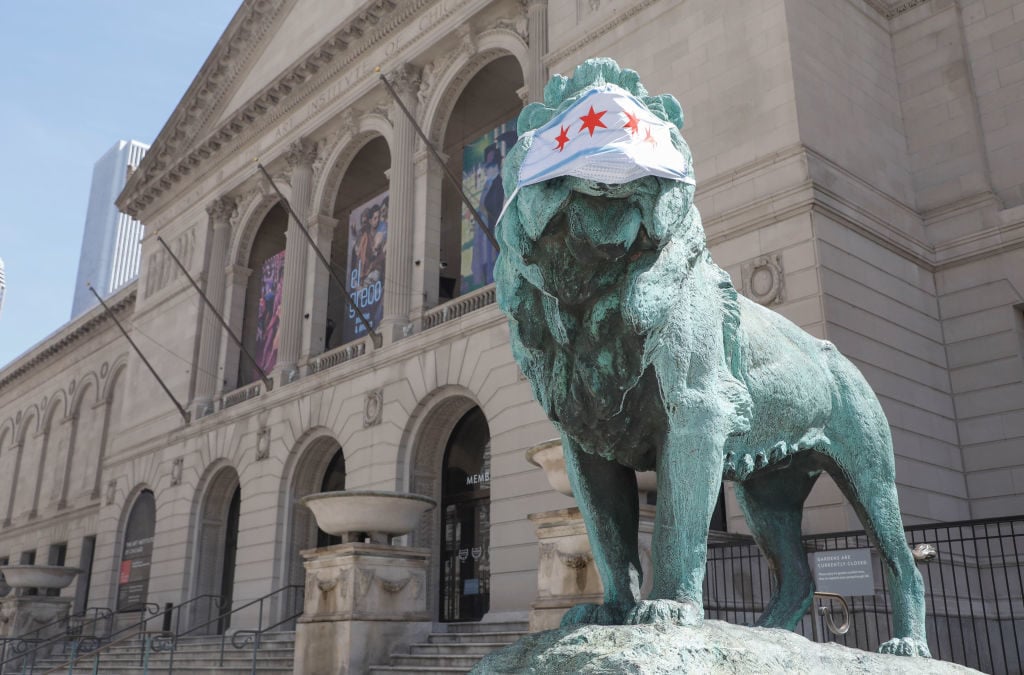
The lion statue with a mask in front of the Art Institute of Chicago. Photo: Joel Lerner/Xinhua via Getty.
Some universities are finding creative ways to aid students during this period of unprecedented hardship.
For students who were no longer able to work their on-campus jobs after lockdown, for example, the University of Chicago created paid off-campus internships. For art history students, Mehring approached curators and conservators at the Field museum and the Art Institute of Chicago and told them the school had students who needed work, and that the university would pay them.
Many institutions agreed, and Mehring was able to place students into new internships. “They’re just over the moon,” she says.
The university is also expanding its humanities teaching fellowships, which Mehring describes as “semi-postdocs.”
Graduates who have completed their PhDs can spend up to two years teaching at the university, while they apply for permanent positions and, perhaps, work on publishing their dissertation as a book. The university is adding about a dozen of these fellowships.
Other students are reevaluating the job market and beginning to look outside the traditional fields of employment for art historians.
“We have a student who’s now working in academic affairs,” Brittenham says. “Students are also moving into publishing and foundations.”
But those aren’t necessarily less competitive fields. “The challenge is getting out of a circuit where there’s not a lot of compensation and a lot of competition.”